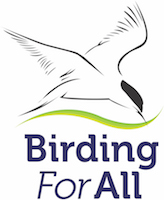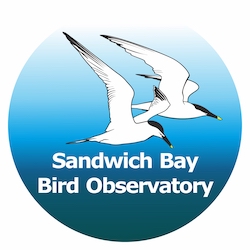The sharp focus of youth…
Birders are often asked [albeit mostly by other birders] what got them into birds in the first place. So, as I reveal all, I will also reveal an hypothesis of mine. That is that how you get started largely determines the sort of birder you become, whether it be the dedicated patch worker, the avid twitcher or the casual birder; whether you collect long lists or delight in detail.
Despite my grey beard and increasing number of ‘senior moments’ during which I cannot recall my middle name or what I had for breakfast, my youth remains in sharp focus. My early life growing up in the 1950s is mostly in monochrome reflecting perhaps the snaps I still have of my friends taken with a ‘box brownie camera’, but the moment when my interest in birds was forged is a moment of brilliant Technicolor, Cinerama and naïve Hollywood drama.
I hesitate to tell my story, as, in an age of apocryhal tales and urban myths, it will seem familiar to the listener.
Let me set the scene… in the grey haze of 1959 I tried using roller skates for the first and only time. As my parents had forbidden them as dangerous beyond imagining, I had to ‘have a lend’ of my friend’s Christmas present in the schoolyard during a morning break.
My parents’ dark foreboding proved well founded. On my first go one leg went north and the other south and I first sat numbed and then in agony and panic as I saw the head of my femur in an unfamiliar position under the skin of my thigh. I had dislocated my hip and, after hours in shock and hospitalisation, eventual surgery found that the femur cap was dislodged and needed pinning back down. I thank my good fortune that this was in the early days of the National Health Service so, despite the family’s lack of funds, I was given the best of care – including 10 weeks in traction as the hip was slowly eased back into its socket.
This meant that for most of that year I was unable to walk and my parents strove to find a non-cerebral pastime to supplement my diet of encyclopedias and superman magazines. Dad thought fishing was the thing, and how right he was.
When he finished an early shift I would be lugged into our sit-up-and-beg ‘Austin 7’ and taken to the local gravel pits where Carp sucked snails eggs from under the lily pads and Pike made accidental maelstroms as they snatched unwary roach for tea.
Dad would carry me to the bank and leave me to set up my kit – a rod made from an old World War Two tank ariel and the sort of fishing reel that, two casts out of three, would create a bird’s nest of line that took half an hour to untangle. Thus, before angle was made twixt lake and man, I had already had to learn Job’s patience, something much needed by the coarse fisherman.
Here it was that a transformation began. The very first journey to the lake was under a grey sky in a monochrome world, but as I first sat on that bank, the sky turned blue and reflected off water droplets atop bright green lily pads and strident yellow lilies. The subtle beige of rustling reeds blended into brown earth banks and gravel. My orange float stood like a beacon of hope as I anticipated the fishes’ bite.
Then all heaven broke loose when the meaning of ‘halcyon days’ was made flesh. Upon my resting rod landed the jewel of the lake and sky, its colours as vivid as a child’s kaleidoscope. I was frozen in time and place unable to shout my glee with an upwelling inside I could not describe, but was surely deep delight. The Kingfisher dived into the water, took a Minnow and bolted like an arrow two feet above the water into the distant corner where the stream fed the lake.
In that instant I became enamoured of birds. For weeks I only needed to shut my eyes and there was that Kingfisher showing me every feather and hue, its shape and movement. I was falling in love, and such emotion cannot be dissected and only poorly described. Not only did that bird turn me into a birder per se, but into the type of birder I am too. I like to sit and wait for birds not chase after them; I revel in the detail of form and habit; I delight in the everyday as well as in the exotic.
On subsequent fishing trips over the years I slowly absorbed the natural world with dad helping me with the naming of plants, birds and all creeping things. If a mystery confronted us then the library was there later to resolved it.
Now, whenever I hear the call of a Woodpigeon on a misty summer morning I want to be beside water. In those endless summer fishing days I was privy to Harvest Mice and Reed Warblers trying to use the same reed stems to construct their nests. On summer evenings I’d watch Spotted Flycatchers perch on a bare twig and fly out and back, out and back harvesting gnats and such from the air until it was too dark to see. Water Voles would walk between our feet in our stillness and snaffle bread-paste bait. I saw the mating dances of great-crested Grebes as they skidded over the water in Spring. When we broke winter ice to try and catch Pike we would see the Pochard and Tufted Ducks use our breaks to dive for food. All day long there would be this parade of common birds, some, like Tree Sparrows, which were then daily visitors, are now almost extirpated. Others like winter parties of Long-tailed Tits are still abundant and just as delightful as when first seen. The familiar and every day is never mundane to this birder forged as I am by patient days and the waiting game of an angler.
Many years later I was part of the initiation of my oldest friend into the birding world but his entry was altogether different. He was fascinated by the technology of my telescope and how it transformed the world. When we first went birding it was to show him a few birds, which could be magically morphed from brown blobs to vibrant detail by the use of optics, and this hunt for birds sank into his soul. He is one for chasing rarity and listing birds like a gamekeeper hanging crows on a fence for the landowner to see. Like every birder he came to appreciate the sheer beauty of birds, but he is also captured by the hunt and delighted by winning the race or by a new bird or a longer list.
I speak to other birders who found our passion in very different ways, wildfowlers who have forsaken the gun and taken up binoculars; walkers who first bought a fieldguide to know what they were seeing on their walks, who then turned into birders who now walk to find the birds that are in those fieldguides; eggers who stopped stealing eggs and turned into conservators of rare birds. All seem to follow our pastime along paths trodden down by their first birding steps… each valid and all part of the richness of our avian pleasures.
As for me, I am forever trapped in time, a frozen droplet of lake water mirroring in sharp detail the azure and red, orange and speckled blue of my first Common Kingfisher.





